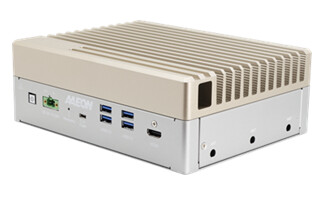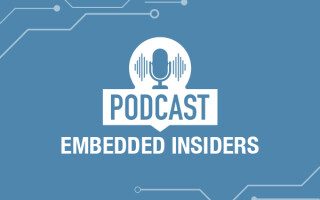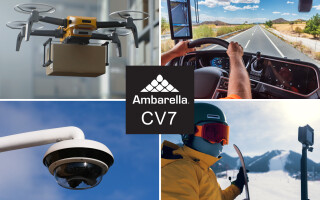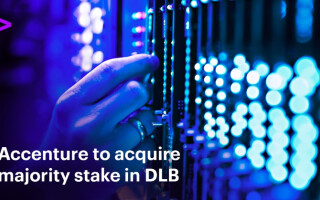Get Infinite Oscilloscope Trigger Types with Zone Triggering
June 05, 2025
Blog

Oscilloscopes remain the ultimate authority for real-world troubleshooting and problem identification in electronics and electrical systems. The primary technology block that allows engineers to isolate specific events is the oscilloscope’s trigger. Oscilloscopes come equipped with a fixed number of triggering types such as edge, pulse width, pattern, and other parametric conditions.
While these trigger types excel at isolating the rarest of events, at times, hardware-based triggers are not sufficient. For example, a user may be able to graphically see an anomaly, but the available trigger options don’t readily conform to isolate this event. Graphical triggering, also known as zone triggering, is a technology that compliments traditional hardware-based triggering. It gives oscilloscope users vast triggering flexibility. Engineers interested in the benefits of zone triggering should evaluate zone triggering offerings across T&M manufacturers to find the instrument that best fits their needs.
What is zone triggering?
Understanding zone triggering technology enables users to determine when it can be effective and when it is not a good choice. How does zone triggering work? Well, it’s pretty simple. Users graphically draw one or more zone areas on the oscilloscope display as shown in Figure 1. Each zone can be parameterized with a “must intersect” or a “must not intersect” condition. With each new oscilloscope acquisition, the scope looks through the acquired record. If the acquisition matches the zone conditions set by the user, the instrument displays the data. If the acquisition does not meet the zone condition, the it discards the data. Consequently, only acquisitions that meet user-specified zone conditions are displayed on the oscilloscope.

Figure 1: Zone triggering expands scope triggering by allowing users to graphically draw one or more zones where a signal should intersect or should not intersect. The oscilloscope only displays acquisitions that meet the zone conditions and discards other acquisitions. In the example, zone triggering isolated an RF chirp pulse.
Zone triggering is typically set up as a second stage in a trigger and follows a traditional hardware-based trigger condition such as an edge trigger. This allows users to use a traditional trigger condition to narrow down event types, and then use the zone trigger to add greater specificity.
Why use it?
Zone triggering allows user to graphically specify conditions that the trigger must meet. From a usability perspective, this often is simpler than determining how to accomplish the same goal using a traditional hardware-based trigger condition. More often though, zone triggering allows users to isolate specific events that would be impossible to trigger on, using traditional trigger selections.
If zone triggering was invented to help engineers isolate events that traditional trigger types cannot isolate, what are some typical examples? Zone triggering can be used to specify a sequential pattern of 1’s and 0’s by drawing a zone in each sequential clock period. Zone triggering can be used on math, for example on the product of current time voltage to trigger on a specific power level in watts.
Supported Sources
Traditional oscilloscope trigger types operate exclusively on oscilloscope analog channels or digital channels, and usually also on AC mains. As zone triggering is a post-acquisition algorithm, from a technical perspective, there are infinite trigger types. Several oscilloscope families on the market allow users to select math as a source. As shown in Figure 2, user can specify a zone that operates on a math equation. This gives users new isolation capabilities. A user with a current probe and a voltage probe multiplies to get power. That user can trigger on power levels and/or power anomalies. If the user selects an integral function on the math signal representing power, the user can trigger on a specific energy level in Joules. The addition of math as a source for zone triggering makes zone triggering incredibly flexible.

Figure 2: Zone triggering on math signal provides flexibly that traditional scope triggering does not support. Trigger on watts of power, Joules of energy, total amperage, total Coulombs, or any mathematical signal you can specify using math.
Historically, oscilloscopes trigger exclusively on time domain events. Instruments with FFT capabilities perform the transformation post-acquisition have not included any frequency domain triggering capabilities. Several oscilloscope families offer zone triggering that also works in the frequency domain as shown in Figure 3. Users can specify graphically what frequencies and power levels cause the oscilloscope to trigger using zone triggering areas.

Figure 3: In this example, the user has set a zone trigger in the frequency domain on the MXO 4. The oscilloscope will capture and display acquisitions where the carrier and sidebands have levels consistent with the drawn zone areas.
Using zone triggering in the frequency domain, users can also quickly create custom filters that only allow capture of specific frequencies. A zone area on the left creates a high pass filter, while a zone exclusively on the right creates a low pass filter, and multiple areas create a bandpass filter as shown in Figure 4.


Figure 4: In this example on a MXO 4 oscilloscope, in 3-seconds the user constructs a couple of different filters using zone trigger in the frequency domain. In the left screenshot, the zone area creates a high-pass signal. In the right screenshot, a combination of three zone areas created a bandpass filter that allows two bands to pass.
Zone Triggering Speed Evolution
Most technology innovation has tradeoffs, and zone triggering is not exempt from this rule. Remember that zone triggering is a post-processing technique. This results in two undesired consequences: first, the additional post-processing needs slow down the overall update rate of the oscilloscope. As a consequence, it’s not uncommon to see zone triggering reduce update rates by a factor of 1000. Second and more importantly, the additional processing requirements will result in increased blind time between oscilloscope acquisitions. This renders software-based zone triggering effective only where signals are repetitive.
A handful of oscilloscope models across multiple manufacturers incorporate ASIC-based zone triggering. As an example, for the MXO 4, MXO5 and MXO 5C series oscilloscopes from Rohde & Schwarz, zone triggering works up to 600K waveforms per second, a million times faster than software-based zone triggering. The instruments’ ASIC-based zone trigger has a minimum trigger re-arm time of about 1us. This value is excellent even when compared against traditional trigger type minimum re-arm times for most oscilloscopes in the market.
Evaluating Zone Trigger Across Manufacturers
If considering adding to an existing oscilloscope, or evaluating zone triggering capabilities on a new oscilloscope, here are a few areas to consider for comparison. Check with your manufacturer to see which of their oscilloscopes support zone triggering.
One big difference users will find across oscilloscope manufacturer zone triggering applications is speed. Check to see if the implementation is software based or ASIC based. See what sources are supported. All scope manufacturers that offer zone triggering applications allow the user to specify an analog channel as a zone source. A smaller fraction of manufacturers allow zones to be applied to math functions and to the spectrum. Zone triggering on math sources can therefore be extremely valuable. For spectral viewing, zone triggering has vast capability that can’t be achieved with time-domain triggers.
A number of other attributes will vary across oscilloscope vendors. Some vendors will allow users to exclusively draw rectangles as zone shapes while others will allow users to draw arbitrary zone shapes. How important is the ability to specify the zone shape for your application? How easy is it to modify the zone size, shape, source, and type? Experiment adding and removing zones on each scope you are evaluating. Users tend to add and/or remove zones more frequently than they originally anticipate. How many total zone areas does the scope allow you to add?
Conclusion
Zone triggering is an oscilloscope technology growing in popularity that complements traditional oscilloscope triggering. For users who have not invested in zone triggering applications previously, the technology continues to evolve and can help isolate events where traditional trigger types fall short. Recent advances include speed with ASIC-based processing, and the ability to apply zone conditions to math functions and spectrum views.





